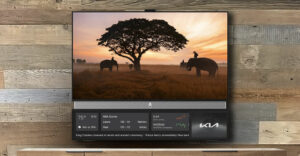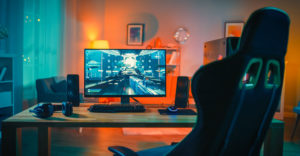
User interfaces will not necessarily change the way we live — the technology will. However, for technology to work and be embraced by new consumers and emerging populations around the world, user interface design is crucial; it enables people to access and use the advancements in technology.
Without simple and intuitive interfaces, end-users are not able to consume the myriad of new technologies that come out every day. Leading companies increasingly recognize that their success and the adoption of their breakthroughs are tied to a product’s ease-of-use.
‘The Jetsons’
User interface is all about convergence, which is an old word with a new meaning. Today, “convergence” is defined as the seamless intersection and interaction of technology and life. Think of “The Jetsons,” where even life’s most ordinary undertakings — like showering and cooking — are suddenly automated through technology.
In the Jetsons’ world of TV-Land comedy, a series of hyper-responsive and mischievous robots became the ultimate cliche for a culture infused with technology. Yet, the vision it encapsulates — technology embedded in all undertakings — is not simply a futuristic series of errors.
Looking forward, the real land of “The Jetsons” will be represented by intuitive and easy-to-use technologies that are responsive in managing and increasing the efficiency of all kinds of things — from complex business analytics to surfing the Internet.
Looking Ahead
Imagine a world where mobile phones exchange information with one’s television. The tablet supplements daily experiences and is a multifaceted device for on-demand entertainment, information exchange and work.
Appliances are connected, communicating and able to be controlled remotely — all to create an interactive and technologically responsive environment that can be easily manipulated by the end-user. Imagine a world without paper currency where a flick of the wrist runs a transaction.
Large consumer product companies have started looking at true convergence among their own products. In the future, however, the drive for intra-device communications will lead to the establishment of protocols across all consumer electronics.
For this to truly work, all touchpoints will have to be aligned with a meaningful “life flow” that is designed to be responsive in human interaction.
As in the home, everything in the work environment will be able to interact seamlessly. Accessing work files on the go, running software on any operating system or browser, and communicating globally in real-time through video conferencing will soon become simple and cost pennies.
Operating systems will automatically align and sync; the mind-numbing lack of incapability will fade from memory.
UX Today
While convergence is on the horizon, end-users are still in for much chaos. Today, processes are being translated differently. One may not realize it, but end-users are increasingly being overwhelmed with the number of user interfaces they have to deal with and figure out.
For example, look at the enormous number of mobile phone handsets in the world market. There are countless iterations and modifications between handsets and often between handsets from the same manufacturer. This forces users to constantly relearn interface conventions. What’s more, the cognitive load of today’s world on device users is poised to increase exponentially.
Relief will not come in the near term. Today, companies are working in their individual silos to carve-out a market leading position. However, over the next decade or more, the disparate conventions and approaches will force consolidation and a standard set of protocols.
When a standard set of protocols for all types of user interfaces emerges, consumers will benefit from a new era of simplicity in technology that will dramatically improve the totality of the experience.
It’s Happening
Consumer electronics continue to lead in the advancement of technology. The new tablet has ushered in a paradigm shift forcing companies to rethink their product offerings. It has disruptively shone a light on the power of seemingly simplistic technology design and accessibility.
From home to work, people have a new idea of how technology should respond to their needs. With Baby Boomers trickling out of the workforce in larger and larger numbers, a new generation of leaders — Gen-X — is adopting and adapting to new technologies.
Yet, for all the tablets Gen-X is bringing into the home and workplace, it is nothing compared to how Gen-Y will interact with technology.
The next big leap for user interfaces remains the seismic shift of the tablet paradigm. Many industries want to leverage the platform. Because the tablet has its limits from a computing standpoint, for the first time, companies are leading with user-centric design to improve functionality in order to create a touch-enabled environment for their applications.
Not all industries will be able to do that with ease. Companies themselves need to stay on their toes and understand that success increasingly relies on their ability to create solutions and products within the context of the new tablet environment.
The consumer electronic nirvana is ease of use and engagement for end-users. The way companies will get there is by understanding their users and what motivates them.
For now, user interface design is driving innovation — to both the benefit and the burden of the consumer. The road ahead will be filled with chaos in design as companies, entire industries and consumers try to untangle and leverage new concepts in convergence.












































